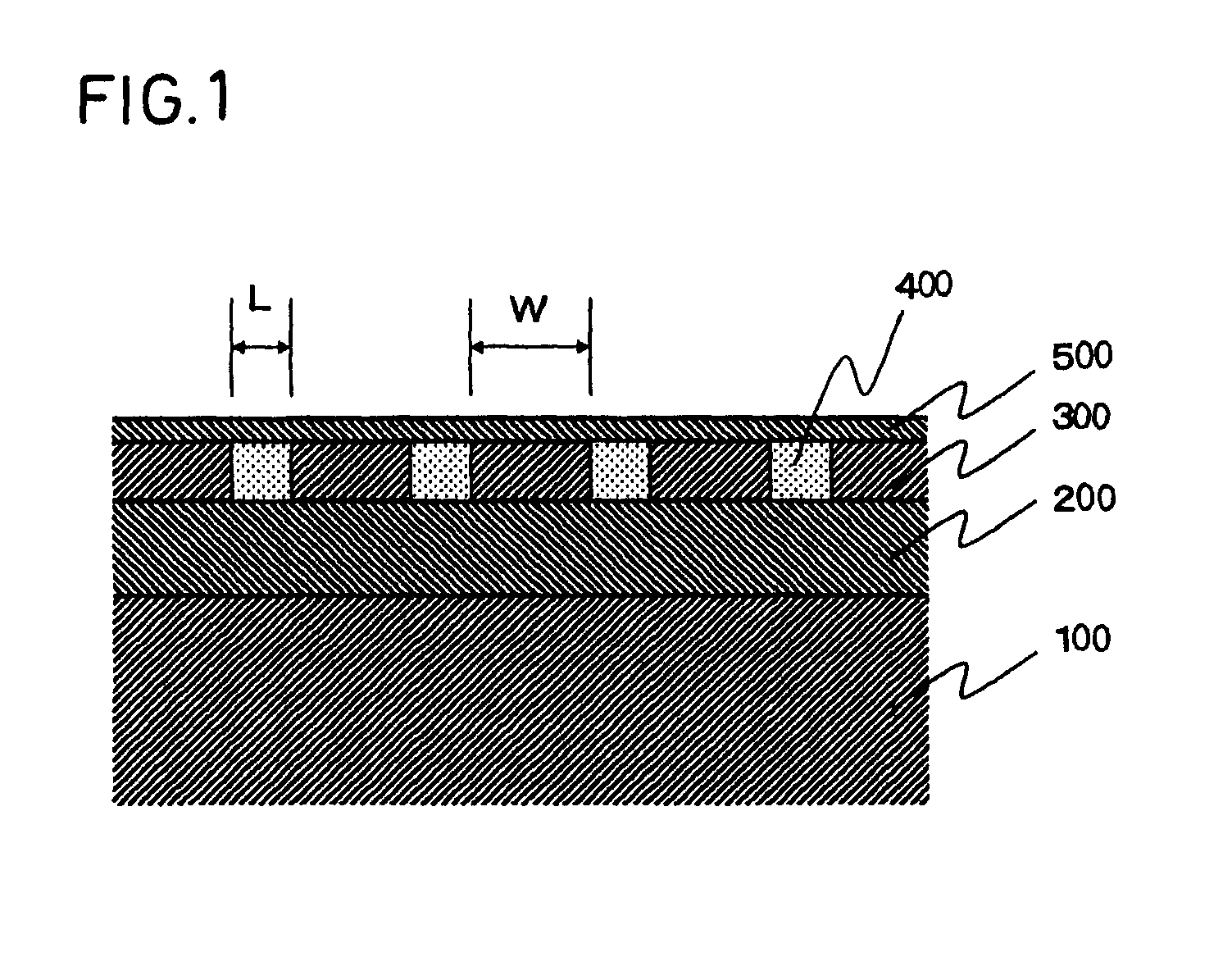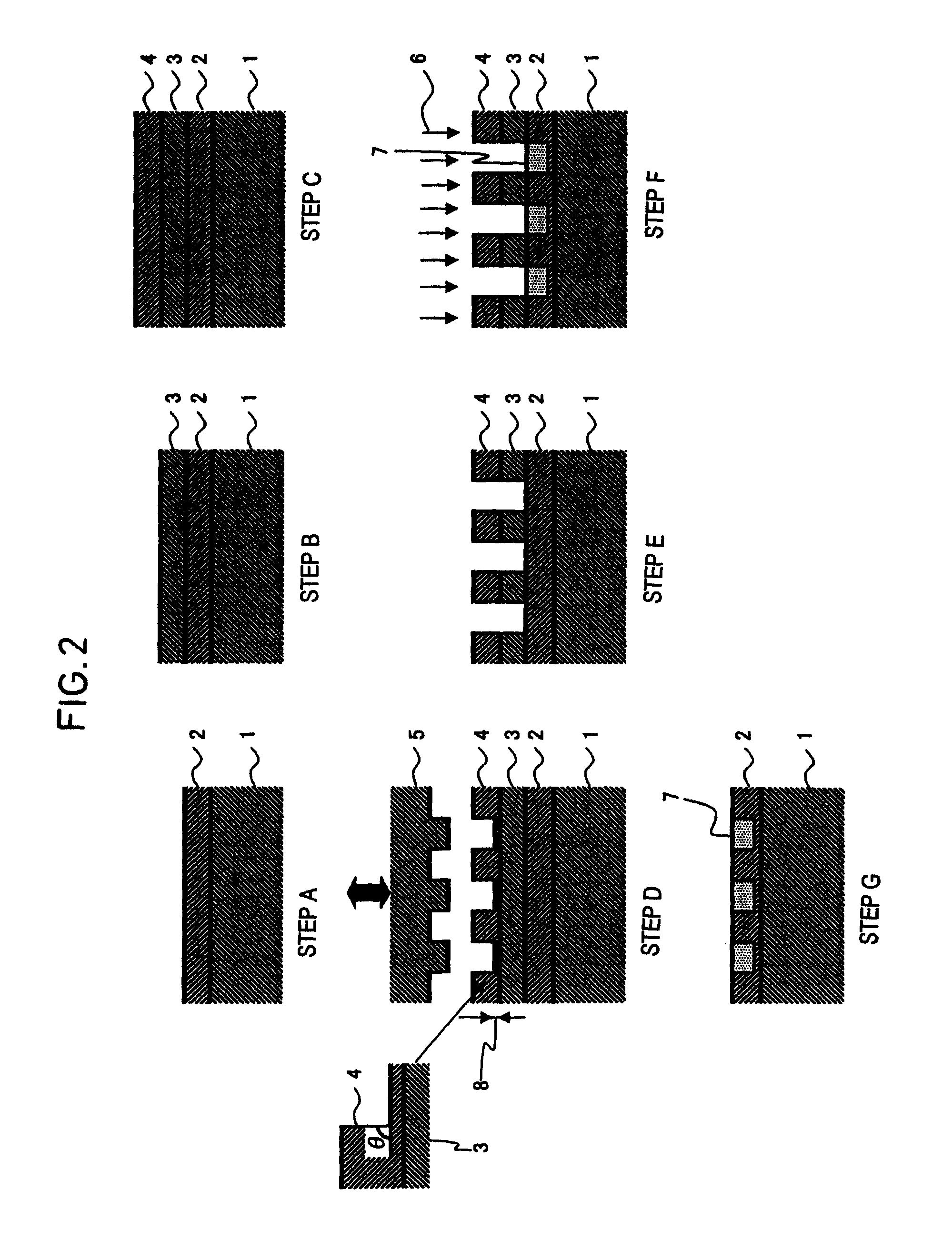Method for manufacturing magnetic recording medium and magnetic recording and reproducing apparatus
a technology of magnetic recording and reproducing apparatus, which is applied in the direction of electric/magnetic/electromagnetic heating, instruments, and record information storage, etc., can solve the problems of affecting reducing bit error rate, and hindering the enhancement of recording density, so as to ensure the stability of head floating, prevent possible adverse effects, and excellent separation ability
- Summary
- Abstract
- Description
- Claims
- Application Information
AI Technical Summary
Benefits of technology
Problems solved by technology
Method used
Image
Examples
example 1
[0075]A vacuum chamber with a glass substrate for an HD set therein was pre-evacuated to 1.0×10−5 Pa or less. The material for the glass substrate was crystallized glass composed of Li2Si2O5, Al2O3—K2O, MgO—P2O5 or Sb2O3—ZnO. The glass substrate had an outside diameter of 65 mm, an inside diameter of 20 mm and an average surface roughness (Ra) of 2 Å.
[0076]Thin films were sequentially stacked on the glass substrate. Specifically, a soft magnetic layer of FeCoB, an intermediate layer of Ru and a magnetic layer of 70Co-5Cr-15Pt-10SiO2 alloy were first deposited in this order using the DC sputtering, and a protective film layer of C (carbon) was then formed by the P-CVD method. The FeCoB soft magnetic layer had a film thickness of 600 Å. The Ru intermediate layer had a film thickness of 100 Å. The magnetic layer had a film thickness of 150 Å. The C (carbon) protective film layer had an average film thickness of 2 nm.
[0077]A mask layer was formed on the resultant stacked structure by sp...
examples 2 to 28
[0082]Magnetic recording media were manufactured under conditions similar to those in Example 1 except for the material and film thickness of the mask which were changed as shown in Table 1. In Example 28, the resist material was changed from the novolac resin to a thermosetting resin, and the curing treatment was changed from the ultraviolet irradiation to a heat treatment at 150° C. for 30 minutes.
PUM
| Property | Measurement | Unit |
|---|---|---|
| thickness | aaaaa | aaaaa |
| angle | aaaaa | aaaaa |
| thickness | aaaaa | aaaaa |
Abstract
Description
Claims
Application Information
 Login to View More
Login to View More - R&D
- Intellectual Property
- Life Sciences
- Materials
- Tech Scout
- Unparalleled Data Quality
- Higher Quality Content
- 60% Fewer Hallucinations
Browse by: Latest US Patents, China's latest patents, Technical Efficacy Thesaurus, Application Domain, Technology Topic, Popular Technical Reports.
© 2025 PatSnap. All rights reserved.Legal|Privacy policy|Modern Slavery Act Transparency Statement|Sitemap|About US| Contact US: help@patsnap.com



